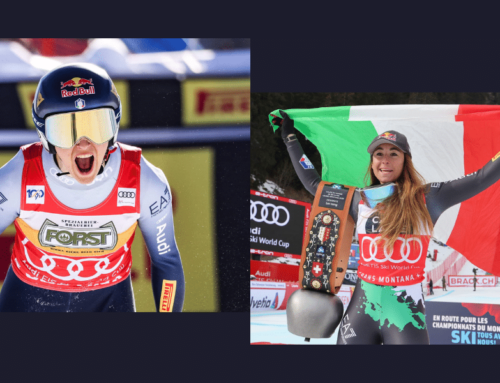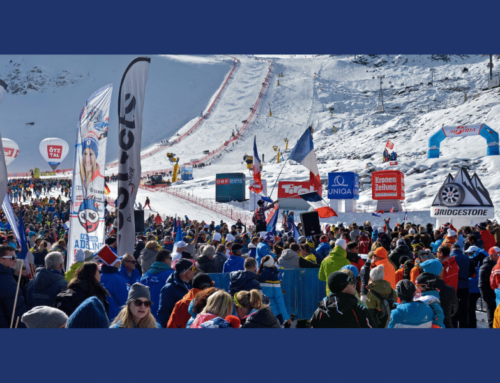McBride: Another perspective … preserving speed in the USA
I am fortunate to have lived much of my life around ski racing as an athlete, coach, program director and supporter. I have also had to the privilege to help lead U.S. athletes win world championship and Olympic medals. This year, I looked through a different lens — not as a coach or director but as a laborer on the course crew for the U.S. Nationals. It was a lot of work for us here at the ski club and I am really proud of the effort my staff and others gave to create the best possible races at a challenging time of the year.
During the three weeks that we were committed to the U.S. Nationals, I watched, listened, and learned a lot. I am not usually one to share my opinions in public commentary, but several things caught my attention that make me concerned we are not creating the supportive foundation and atmosphere to repeat international downhill and super G success for the near and long-term future.
First and foremost, the field size of the U.S. national championship downhill race greatly surprised me: 19 Girls and 32 boys — Really? Aside from the World Cup this is one of the highest levels of racing in the U.S. Let’s be clear — this was not an indication of COVID restrictions. We have been hosting races for our program all winter long with 100 athletes. This was a quota and scheduling issue. Quotas for the downhill event should be separate from the slalom, GS and super G quotas so we can maximize field size and exposure to downhill. This is crazy to me that there was a tech elite spring series event happening simultaneously. I understand we all need to be flexible with a crazy pandemic in the midst, but the U.S. National Championships downhill should be a standalone event, and the field size should be filled.
Where are the elite athletes?
Secondly, has the USST evolved to a place where not all of the top athletes are expected to be at the U.S. Nationals? My last few years coaching with the U.S. team, I witnessed this trend and it surprised me. For most of my career with the USST, all my athletes attended the national championships as a way to give back to the ski racing community, their sponsors, the next generation and all those that had been a part of climbing the steps to the national team. We were all tired after a long season in Europe, but attending the U.S. Nationals was not up for debate. We all went. It is also important to recognize that for many of the athletes that qualify for the national champs, this will be the only time they compete on the same venue as the World Cup skiers they look up to. I remember my first National Championships and the most memorable moment for me was being in the same place and time as the Big DOGS. I was totally inspired. I am sure my skiing was very unmemorable, but the event left me in awe. National Championships in Norway, Switzerland, Austria, etc., do not have athletes opting out if they are healthy and able.
Speed development
I have had and will continue to have many philosophical disagreements with others concerning speed skill development. I do not expect everyone to agree with me and for sure I do not have all the answers, but I do know this for certain:
Super G and downhill skiing are highly skilled endeavors and require specialized skills, which differ from technical skiing. I am a firm believer that many of the fundamentals can be taught at young ages and the progression is very deliberate and intentional. There are so many subtle skills involved in speed, such as gliding, traversing, skiing with minimal edge angle, aerodynamics, jumping, managing pressure through terrain and, of course, mentally dealing with an activity that requires full commitment, focus and the knowledge that consequences are extremely high if something goes wrong. We as a country should be careful thinking that all speed skiers are going to follow the track of a Mikaela Shiffrin or Bode Miller. These are very special athletes mentally and physically that have won all disciplines. A high level of technical skills carries across disciplines and I fully support teaching technical proficiency in GS for speed skiers. I will say that there are lots of very talented speed skiers who are not great slalom skiers. For those of you that are — my hat goes off to you, but the reality is, there is a difference between solely technical and solely speed skiers. It is not only a different skillset, but it is also a different mindset. Most coaches would love to see their athletes develop their skill base across disciplines, but in a world of specialization, there are now fewer athletes that can win in every discipline on the World Cup.
I get tired of hearing the idea that it is easier to make the U.S. speed team than the technical team. Maybe it is true, but who cares? There is absolutely no shortcut to being great at speed — even if fewer people decide to compete in our own country. I know there are lots that believe all skill development at a young age should be targeted at tech events. I understand there is a lot of carryover with edging and turning skills, but why limit a youth’s development by preventing him or her from learning speed skills? It will only help them become better tech skiers. Here at our club (AVSC), we have speed camp for our U10 and U12 athletes and we host two super Gs during the season. It takes a lot of work and for sure we are lucky to have the venue and support to pull off such an event. I see this as an integral and enjoyable part of youth ski development.
I worked hard to create a National Championship downhill that included many speed-skill elements. It was no World Cup but a cool two-run downhill with gliding, terrain, 87 mph, traverses and jumps. It was just a bit disappointing to see so few show up to compete with all the time and energy committed to make it happen. I have to believe if there were no scheduling conflicts and quota restrictions, we would have seen a larger field size for men and women.
I can attest that you gain perspective as the host for a race series, and most of it is very thankless work. I did receive a “thank you” from a former USST athlete for the effort on the event and that makes it all worthwhile.
We as a nation do not want to just rely on the next phenom athlete to carry us to greatness on the world stage. This country has created and developed an incredible group of speed athletes, women and men, that have stood on the top step at the World Cup, World Championships and Olympics. I want to see this tradition continue, and in order for this to happen it is going to take all of us to pull up our socks and do what we can to support and nurture speed-skill development. This will require former athletes, current athletes, coaches, programs, NGBs, ski areas, mountain managers, and communities to all do what they can. Speed training is difficult to create, needs to be safe and requires space and resources. I realize this is not possible for everyone, but for those of you that can, please support the preservation of speed greatness in the USA. We will continue to do everything we can in our power here.
Have some thoughts on this? Send a letter to the editor. If it’s good, we’ll publish it.





















